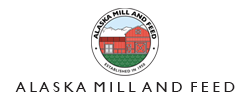Feeding Your Older Cat | Alaska Mill & Feed
Posted by Kimberly McCourtney on Dec 3rd 2020
As cats age, their nutritional needs sometimes change. Diet is an important way to help keep older cats healthy. To maintain optimal body weight and stamina, you should consider the following factors that influence the type and amount of food your older cat needs.
Older cats generally have a slower metabolism and thus require fewer nutrients than cats that are growing, gestating or lactating. Older cats also are often less active and may require a reduced-calorie diet.
Weight control is important in a cat's later years. Because less-active older cats usually require fewer calories, adjusting the number of calories in an older cat's daily diet will help prevent weight gain and health problems associated with obesity. Obesity is considered a significant health problem in older cats, affecting about 25 percent of cats.
Progressive weight loss also can be a health problem for older cats and can signal health problems. Older cats should be monitored regularly for changes in weight. Weight loss can indicate health problems such as kidney failure, diabetes, tumors or other disease.
Remember that cats are individuals and even when other factors are the same, two cats may need different amounts of food because of their different metabolic rates. You should be sensitive to your cat's individual dietary needs.
Obesity in Older Cats
Approximately 25 % of cats are overweight or obese. A cat is considered obese if it exceeds its optimum weight by 20 to 25 % due to an accumulation of fat.
Extra weight puts a strain on organs like the heart, liver, bones and joints and may cause or aggravate other health problems. Obesity has been associated in older cats with increased severity or incidence of health problems such as diabetes, liver and pancreatic disease, locomotor dysfunction, and complications during anesthesia and surgery.
The best way to determine how well your cat's diet meets its activity level is to examine its physique. You should frequently monitor your cat's body condition and give a body condition score. By putting your hands on your cat and feeling its ribs, you can determine whether you need to readjust its food intake.
The standard body condition system provides a tool to help evaluate your cat using a benchmark of nine body conditions, ranging from emaciated to grossly obese. Ideal body condition should be the goal. This would be a well-proportioned cat in which you can observe the waist behind the ribs. A cat in ideal body condition would have minimal fat covering its ribs and minimal abdominal fat.

